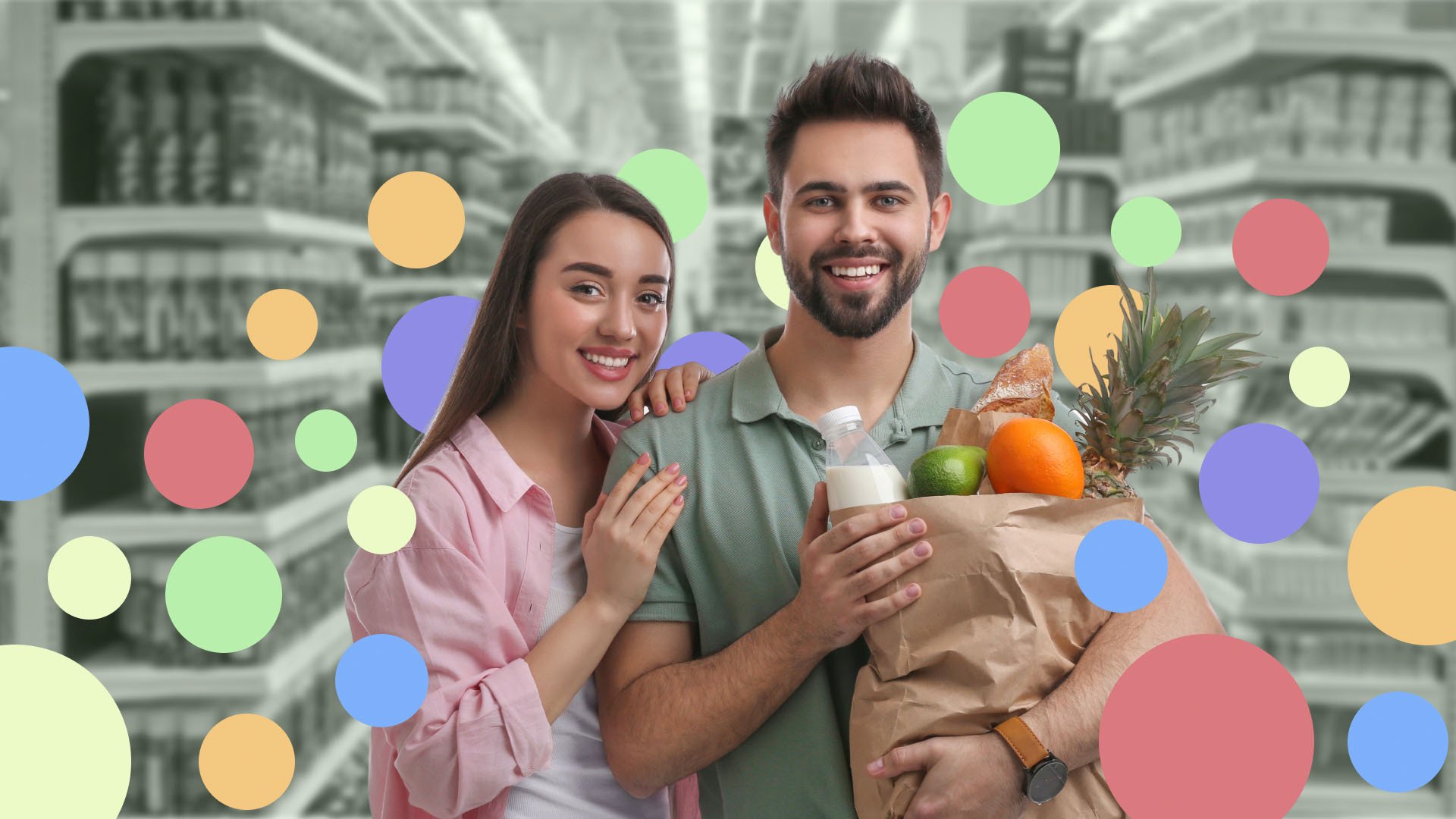Creating the perfect marketing package: How innovative CPG brands are dominating their category
Consumer packaged goods, also known as CPG, are more often than not a household staple. Officially defined as items that are consumed every single day by your typical consumer, CPG covers an entire spectrum of products from the food in your fridge to make-up and cleaning products.
Given many CPG products are essential to everyday life, it would be easy for brands to rest on their laurels. Particularly the global mega brands that dominate market share such as Nestle, Pepsico, General Mills and Unilever.
But ecommerce has provided an exciting and unique opportunity to differentiate the way they market their products and connect with consumers, using experiential marketing and clever tactics to persuade consumers to buy products – both ordinary and extraordinary – online. This direct-to-consumer (D2C) approach is shaking up the sector and providing opportunities for CPG brands of the future to make waves with consumers.
So, what does the CPG space look like in 2024?
- CPG is more competitive than ever! Over the next 12 months we expected to see more DTC brands launching and growing their share, more big names acquiring smaller companies, and more CPG brands selling directly online. A direct example of this comes from Unilever, who have acquired multiple start-ups including Dollar Shave Club, Schmidt’s Naturals and snacking company Graze.
- Word-of-mouth continues to play an important role in the consumer buying process, especially for CPG brands, with 95% of consumers saying they read online reviews before they make a purchase and 58% saying they would be willing to pay more for products with good reviews.
- According to McKinsey, 80% of CPG CEOs are looking to marketing to drive growth. How? Through data-driven strategy, which can increase net sales value by 3-5% and marketing efficiency by 10-20%.
- The D2C business model is proving hugely beneficial for CPG brands, with online sales expected to reach $161 billion this year. This huge revenue growth is being driven by increased online spending and the increased use of digital marketing and online platforms by retailers.
- We’ve seen this particular trend appear a few times across our sector spotlights, but it remains true for a reason, sustainability matters. 62% of consumers are willing to change their purchasing habits to reduce their environmental impact, and we see this impact in the CPG space with more plant-based brands, more ethical beauty, and more holistic wellness offerings launching every year.
- Expanding on this, 40% of consumers plan to purchase plant-based meat products this year, with the industry is forecasted to reach a massive $480 billion. And the self-care market is estimated to reach a value of $79.3 billion by 2025.
- But brands need to balance sustainability with convenience. 62% of consumers say delivery speeds influence their purchasing decisions, 85% say they search elsewhere when delivery time is too long, and 48% say they will pay more for an item if it comes with faster shipping.
Clearly, data enrichment is the golden goose for CPG brands. The more data points you add, the more complete your picture of your customer is. These data points could include customers' shopping behavior, their core interests, their beliefs and values, or their engagement on social media.
We’ve got no time to waste, let’s get straight into how CPG brands are dominating their categories.
What does the potential CPG audience look like?
We’ve briefly touched on the importance of data for CPG brands in connecting with customers, but why? If you want to deliver truly personalized, intuitive, engaging consumer campaigns, CPG brands need to embrace non-traditional marketing methods.
While OOH still plays a role for many, digital marketing tools and ecommerce platforms are the future. These types of marketing tools can collect endless amounts of data that can be translated into ground-breaking consumer insights that will shape your long-term strategy.
For this reason, we wanted to dive deeper into what the potential CPG audience looks like in 2024. We built an affinity report which analyzed the audiences of major CPG brands including Nestle, Pepsico, Unilever, P&G and various product-focused brands including Nike, Cheerios and Coca Cola. We then added a filter of shoppers and shopping enthusiasts, to narrow our focus to the most engaged CPG consumers. You can view the full report details here.
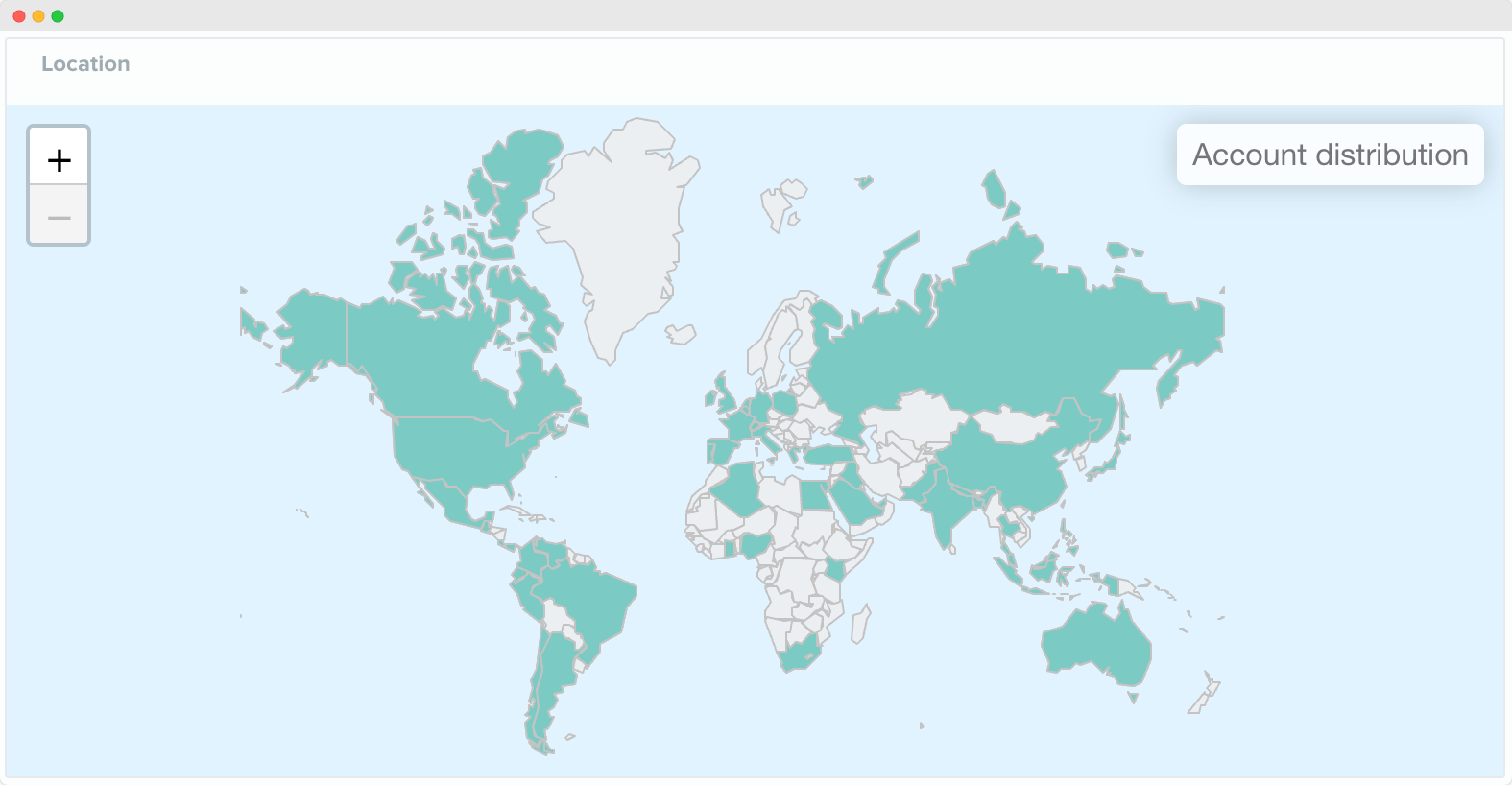
Looking broadly at the entire CPG audience, we can extract some general insights. But as we mentioned earlier, the CPG space covers a huge range of everyday products, which means a broad stroke analysis of the entire potential audience is unlikely to deliver actionable insights. We need to dive deeper and remember that your audience is not a monolith.
If you want to deliver stand-out campaigns, you need to identify and analyze the segments most likely to be receptive. Our affinity report generated six possible segments to explore, we’re going to focus on the three:
- Beauty & make-up 💄
- Social media enthusiasts 💬
- Soccer fans ⚽️
.png?width=2424&height=1693&name=CPG%20audience_%20Segment%20analysis%20(1).png)
Beauty & make-up 💄
- First up, our beauty and make-up segment, which accounts for approximately 23% of the total audience. As the name suggests, this segment loves all things related to the beauty and wellness category. It skews much more female, with women accounting for about 75% of the total audience size, and they’re largely city-based with London, Paris and LA appearing as top locations.
- They’re passionate about their interests. We see them self-identifying as beauty and make-up lovers using keywords in their social media profiles, as we also see them using words such as ‘life’ and ‘fashion’, suggesting that their interest in these types of products is an integral part of their day-to-day lives, as a hobby or even as a profession.
- This segment is more likely than your average CPG consumer to be loyal to certain brands, as beauty and wellness products are often bought based on recommendations from family, friends or influencers. In the top influencers and brands for this segment, we see global brands such as L’Oreal, Maybelline, Mac Cosmetics, Sephora and Urban Decay dominating. We also see some more community-focused brands including MAKE UP FOR EVER, a collective of make-up artists.
- Compared to our global baseline, this segment is 25 times more likely to use Snapchat, 24 times more likely to use Pinterest, and 18 times more likely to use TikTok than your average consumer. All of these social channels present a strong opportunity to tap into tactics such as influencer marketing or paid advertising campaigns to reach them effectively.
- This ties in well with their purchase influence factors too. Our beauty and make-up segments are much more likely to buy a product if they’ve seen it on social media, and they’re also likely to be influenced by online advertising. Interestingly, product utility is least likely to influence a purchase, it seems they value recommendations from trusted influencers more than what the product actually does.
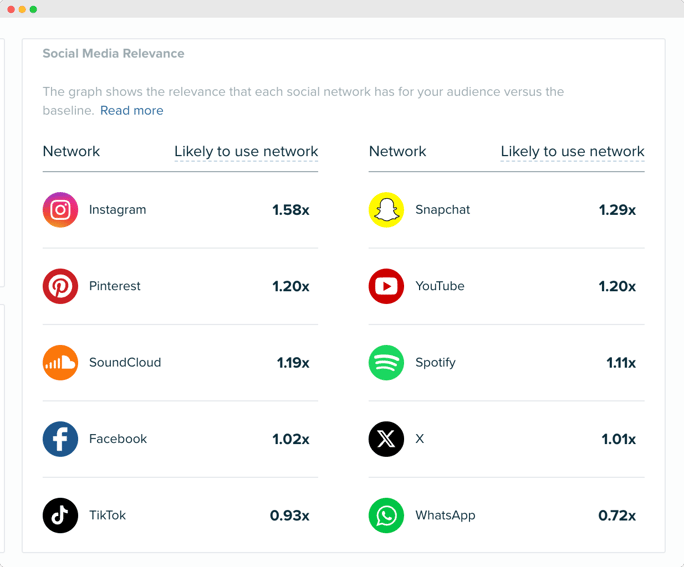
Social media enthusiasts 💬
- Our social media enthusiast segment is a community of consumers who are highly engaged with digital marketing in general. This could be a professional interest or a personal one, but the overarching theme is that they spend a lot of time online and are likely to be more receptive to online campaigns.
- A large proportion of this segment are based in the US, approximately 30%, and they’re also primarily English-speakers, about 63% of the segment. It also skews slightly more male, with men making up about 58% of the total segment size. Whether or not you tailor your campaign on gender depends on the product you’re selling when it comes to this segment.
- There are two stand-out interests for this segment. The first is news, with their top influencers and brands consisting largely of news sites including The Economist, Wall Street Journal and Reuters. The second is travel, we see that about 47% of this audience has an active interest in travel including hotels, transport, destinations and tourist facilities.
- Some of the most actionable insights for this segment comes from the personality tab, powered by IBM Watson. The consumers in this segment are analytical, expressive and social. They enjoy a fast-paced, busy schedule with many activities, but they’re more likely to carefully think through decisions before making them.
- How to reach them? In terms of their online habits, the majority are using LinkedIn, but we also see them using longform text-based digital channels such as Reddit, Telegram and Medium to connect with others. They want to engage with communities and discuss their thoughts with other consumers, which means word-of-mouth via friends and family is a highly influential purchase factor for them.
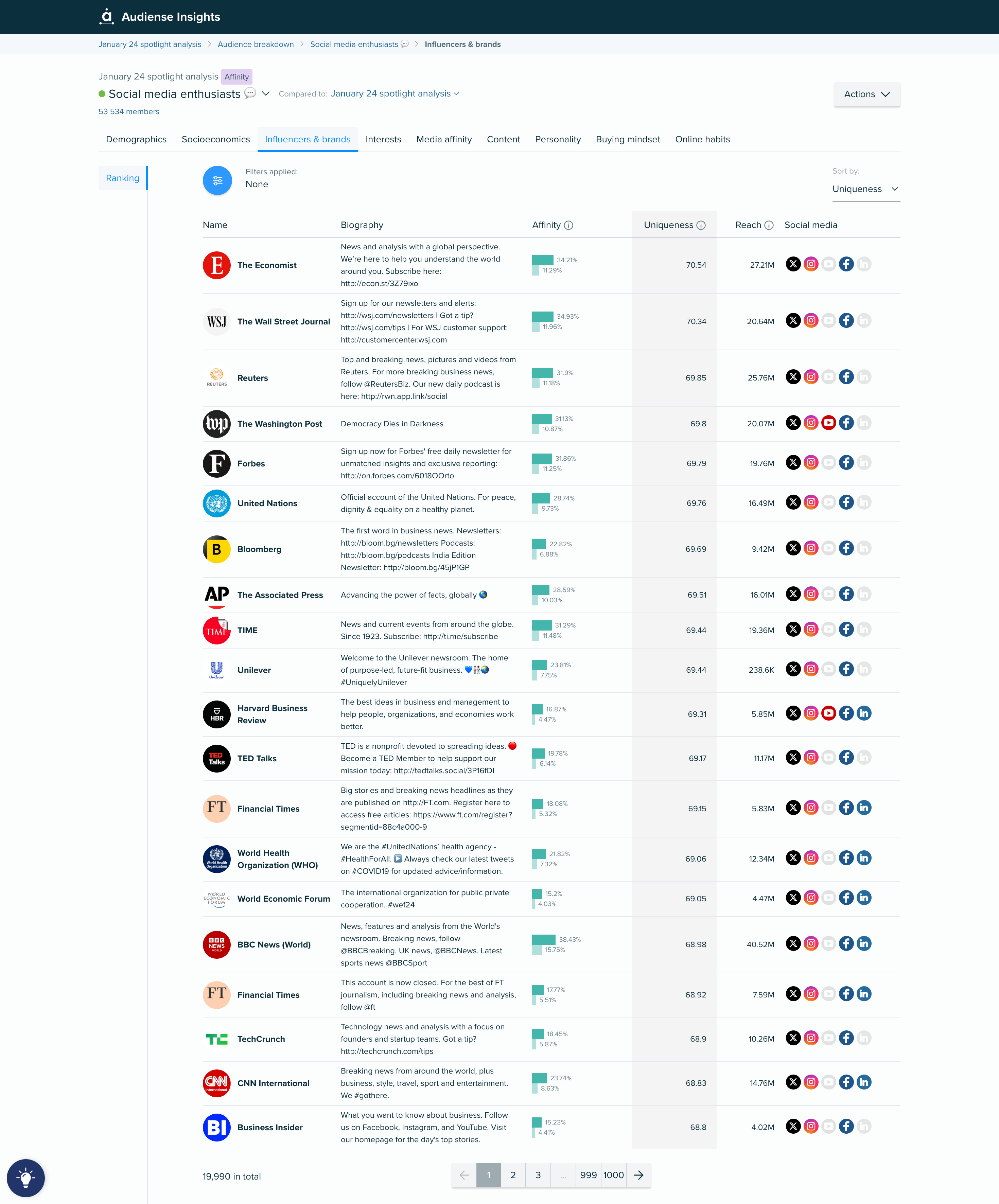
Soccer fans ⚽️
- Score! Our soccer, or football for UK readers, fans are massive sport enthusiasts who spend the majority of their time watching, thinking and talking about their favorite teams. We’ve focused specifically on soccer here, but if you explore the full report, you can see basketball is another favorite among this CPG audience.
- Despite the growing interest and awareness of women’s soccer, men are the primary demographic in this segment, accounting for 87% of the total audience. We also see the UK is the largest country in this segment, accounting for 27%, closely followed by Indonesia, Brazil and Nigeria.
- How exactly does this translate for CPG brands? It’s all about influencers. Looking at the top influencers and brands, it’s no surprise we see the social accounts for major sporting associations such as the Premier League and UEFA, but we also see sports personalities and clubs such as Manchester United, Neymar, Rooney, and Ronaldo sitting alongside apparel brands including Adidas.
- Looking to purchase influence factors, brand name is the most influential channel by a significant percentage, but this segment is also receptive to both social media and online ads. This opens the door to exciting collaborative campaigns for innovative apparel brands looking to reach these consumers.
- Where else are they spending time? Compared to our global baseline, this audience is 17 times more likely to be using Snapchat and 15 times more likely to be using WhatsApp. They’re also likely to be watching, and listening, to Sky Sports, ESPN, TNT Sports, and attending in-person sporting events. This is particularly interesting for brands thinking about Superbowl spots or Olympics-related campaigns
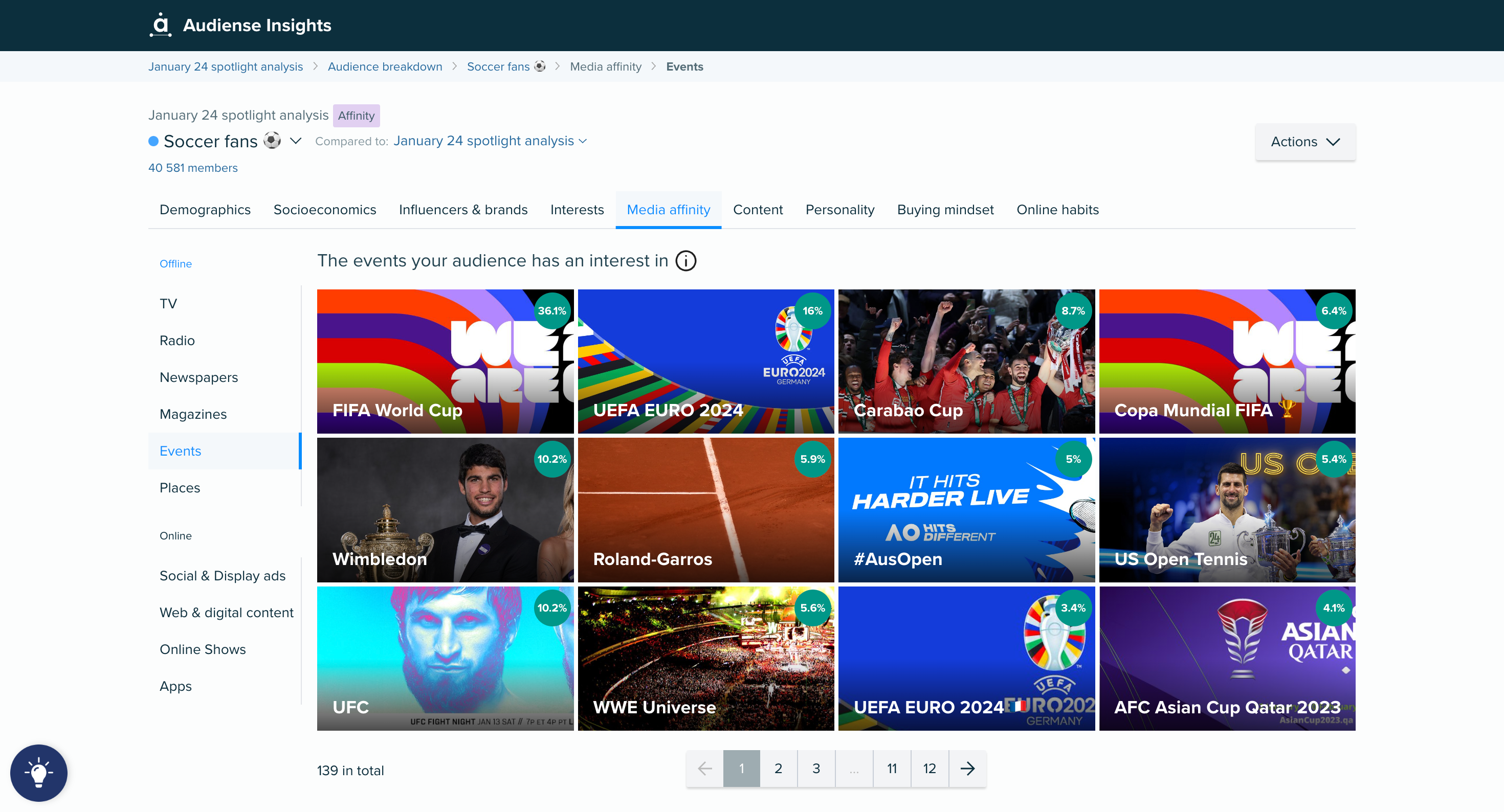
How innovative CPG brands are dominating their category
Our audience segments have given us plenty of food for thought, but the most important question is, how are CPG brands using these insights to develop innovative campaigns that grow market share? Here’s a snapshot of how four brands are creating the perfect marketing package.
Function of Beauty
Data-driven marketing is becoming increasingly important, especially as more CPG brands expand their D2C ecommerce efforts. With more data comes more opportunities to create truly personalized products, without breaking the bank.
@functionofbeauty Mousse = VOLUME! Get your notes ready as @ASHLEY takes you through 'Mousse 101'. Get your very own Custom Zero Gravity Styling Mousse exclusively @target ♬ original sound - functionofbeauty
Function of Beauty, a haircare brand that launched in 2016, has been successfully creating custom products for years as major brands struggle to catch up. Their website allows customers to complete a 2-minute quiz which asks questions about your hair type, structure, and overall #goals in order to create products made just for you. And the customisation runs deep, right down to the scent of your shampoo.
They’ve been able to swiftly adapt to changing marketing trends to reach their ideal audience, working with influencers on TikTok to promote their products and show off the incredible results. The success of their haircare has also allowed them to expand into skincare and other styling products, which demonstrates the growing consumer appetite for truly personal products.
Meatable
We know that sustainability, and ethical consumption, is top of mind. The plant-based meat product industry is set to reach $480 billion this year, and 40% of consumers plan to introduce more plant-based products into their diet. Brands such as Beyond Meat and Quorn have already made significant progress in snapping up market share with their soy-based offerings, but for some consumers, it doesn’t quite scratch the itch of meat cravings. Enter, Meatable.
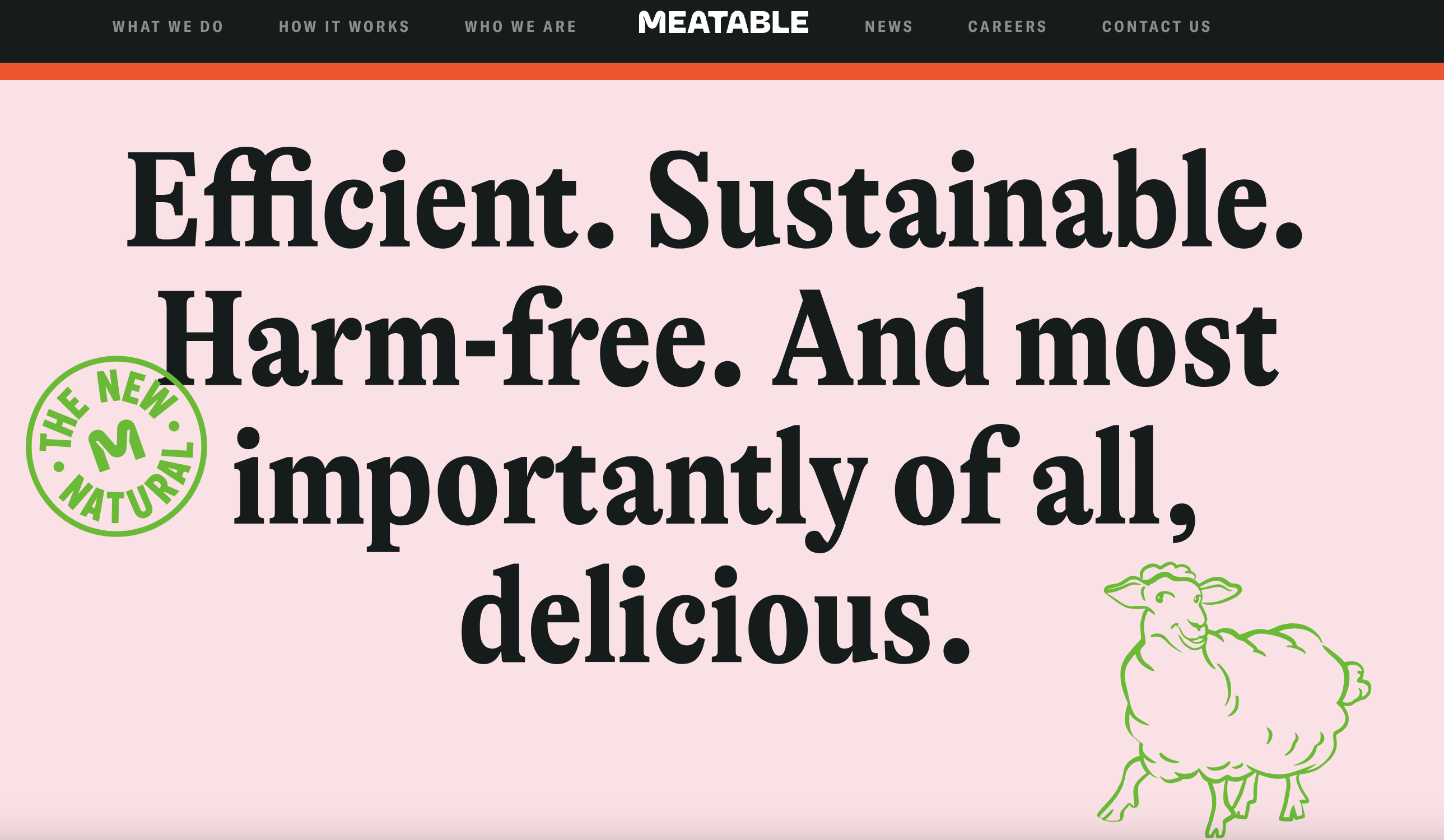
They’ve been raising the stakes (or steaks) for consumers with their mission to satisfy the world’s appetite for meat. Using stem-cell technology, this Dutch-based start-up is producing lab-grown meat to fill the gap in the market and will inevitably appeal more directly to meat lovers who can’t quite bear to give it up beyond a Veganuary challenge.
Their marketing and branding are a testament to their ethos, with clear, transparent visuals that clearly communicate their ethos. They’re also working hard to place the product in the media sources that will appeal directly to their intended customer including Techcrunch, Bloomberg and Plant-based News.
McDonalds
From lab-grown meat to a stalwart of the category, McDonalds has faced its fair share of controversy in recent years over their treatment of animals in the name of creating fast, affordable food. They’ve been working hard to address that, but one of their greatest challenges has been to change the public’s perception of the brand, especially more ethically minded Gen Z consumers.
Which is why we love their most recent campaign, ‘Change a little, change a lot’ which focuses entirely on 90s nostalgia to get their point across. They created several 30-second ad spots which draws in seriously nostalgic 90s imagery including a tele-text inspired ad which highlights they’ve been using 100% British and Irish beef since you could book holidays on your TV, to another spot which uses 90s fashion to encourage people to get with the times. Even if you can’t quite get on-board with lab-grown meat just yet, at least you can get an ethical burger.
Curie
Consumer interests are diverse, and one trend we’ve noted in recent years is that clever brands understand the power of strategic collaboration. We’re not just talking about influencer marketing here. We’re talking about brands that get together to capitalize on crossover interests. Think the Barbie movie, without the megabucks budget.
D2C brand Curie have done this exceptionally well, by choosing to partner with gyms. After launching an initial partnership with SoulCycle in 2021, which brought their range of deodorants and body washes into locker rooms, they partnered with Equinox to place products in over 100 studios over the summer period. They also created a limited-edition scent, inspired by the gym’s popular eucalyptus-scented towels. Clearly this strategy is working, as the company enjoyed 400% year-over-year growth between 2021 and 2022.
Key takeaways
So, what have we learned from these excellent CPG brands?
- One-size-fits-all does not, in fact, fit all: In a data-driven world, the right kind of personalization can make-or-break your brand. One-size-fits-all marketing is quickly becoming a retro tactic, you need to think carefully about how you can appeal to the different segments of your consumers, whether it’s through the product itself or a more tailored approach to your campaigns.
- Keep your brand at the front of your mind: Presenting a consistent, unified experience across every single touchpoint is the key to creating great marketing campaigns. You need to make sure that every channel you use, from social media and websites to your in-store point-of-sales materials all tie-back to your brand and your core message. This becomes even more important if you’re considering partnerships or influencer marketing, everything needs to tie together.
- Subscription-based products present an interesting marketing opportunity: One thing Function of Beauty does well, in addition to personalization, is making their products an essential item. While they don’t make their subscriptions the focus of their marketing, customers are encouraged to sign up for regular deliveries of their custom beauty products in exchange for a discount. If there’s an opportunity to make your products subscription based via your ecommerce channels, make sure you employ clever marketing. In a world of dying brand loyalty, subscriptions could be your savior.
Ready to take the next step in audience intelligence for your marketing? With tools like Audiense, conducting in-depth audience analysis and discovering actionable takeaways makes creating tailored marketing strategies easier than ever.




